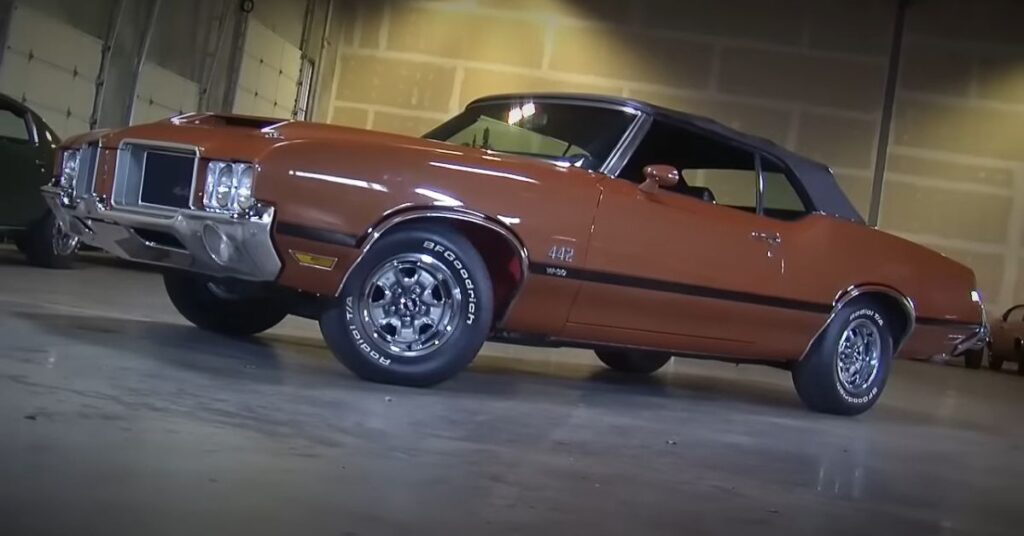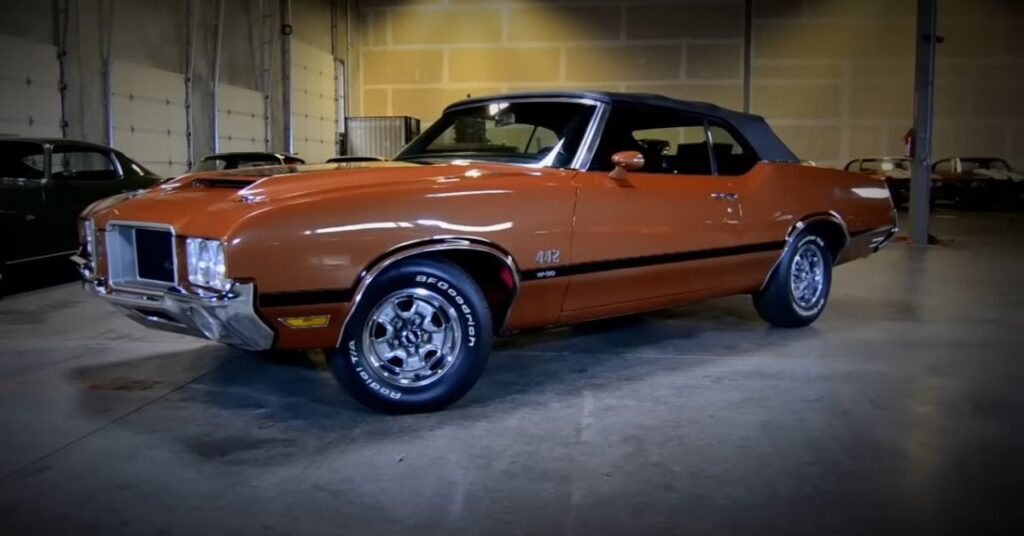In the world of American automotive history, few vehicles have captured the imagination and adrenaline of car enthusiasts quite like muscle cars. These high-performance machines with their powerful engines, aggressive styling, and exhilarating speed have become icons of a bygone era. Among the notable muscle cars of the past, the 1971 Oldsmobile 442 W30 Convertible stands as a testament to the spirit and excitement that defined the era.
The Evolution of the Oldsmobile 442
The Oldsmobile 442, which stands for “4-barrel carburetor, 4-speed manual transmission, and dual exhaust,” was first introduced in 1964. Originally conceived as a performance package for the Oldsmobile Cutlass, it quickly gained a reputation for its impressive power and handling capabilities. Over the years, the 442 went through several iterations, each one pushing the boundaries of performance and style.
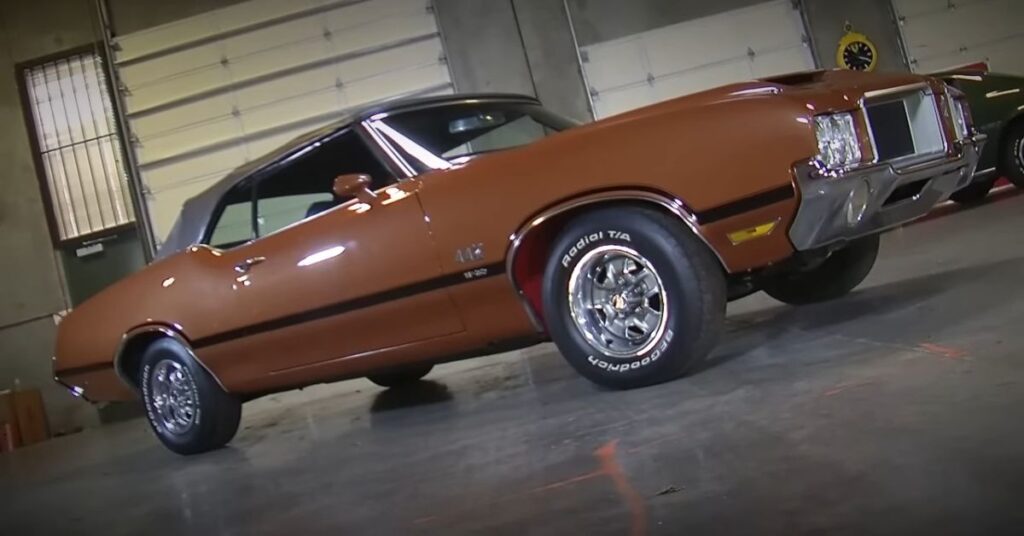
By the time 1971 rolled around, the muscle car landscape had started to undergo significant changes. Factors such as increased insurance premiums and emissions control regulations began to impact the production and performance of these exhilarating vehicles. Manufacturers had to find a delicate balance between meeting the demands of enthusiasts and adhering to new industry standards.
Overview of the 1971 Olds 442 W30 Convertible
Now let’s take a closer look at the 1971 Olds 442 W30 Convertible, one of the standout models of that year. The W30 package was an upgrade to the standard 442, incorporating various performance enhancements and distinctive features. This particular convertible model, finished in a unique color called “bittersweet,” is a rare find that exemplifies the essence of American muscle cars.
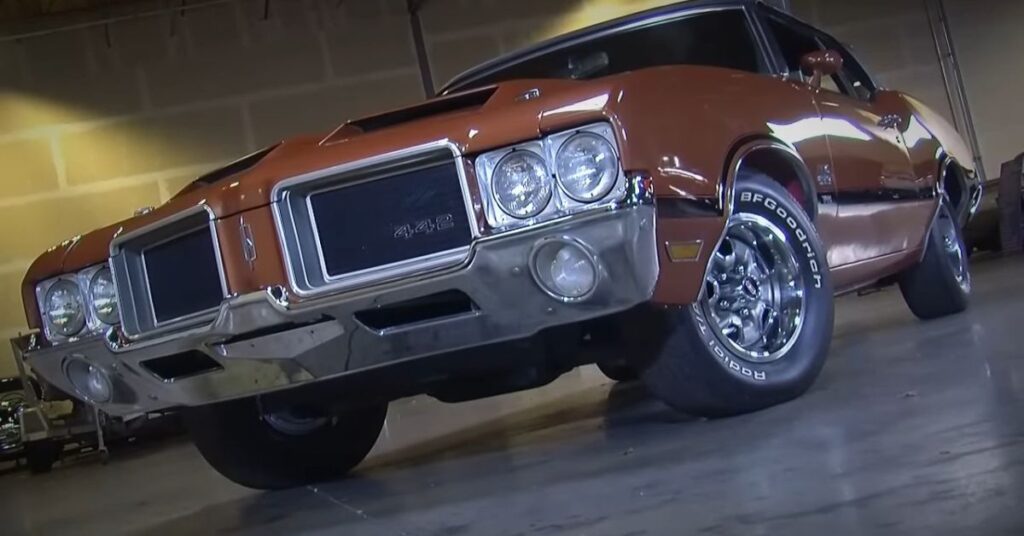
The 1971 Olds 442 W30 Convertible boasted several unique features that set it apart from its peers. Starting with the 455 cubic-inch V8 engine, it delivered impressive power and torque. The outside air induction hood, complete with dual scoops and a vacuum-operated air door, added to its aggressive and distinctive appearance. Originality was a key factor, as evidenced by the steel bottom structure of the hood.
Performance Specifications of the W30 Package
Equipped with the W30 package, the 1971 Olds 442 Convertible delivered impressive performance. Its 455 cubic-inch V8 engine produced around 280 horsepower and 370 foot-pounds of torque. While these figures were slightly lower than the previous year’s model, the 1971 W30 Convertible remained a force to be reckoned with on the road. Despite the reduced compression ratio and other modifications, it maintained its reputation as a formidable performer.
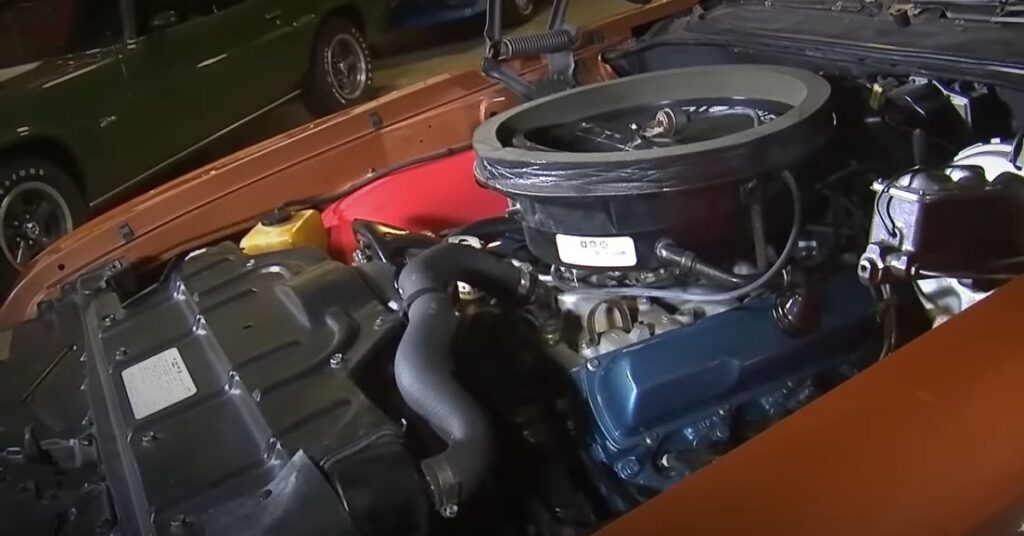
Although the power numbers saw a slight decrease, the 1971 Olds 442 W30 Convertible still provided exhilarating driving experiences. The W30 package included various enhancements, such as a special camshaft, aluminum intake, and high-performance components. These additions, along with the car’s lightweight design, allowed it to retain its power and agility. With its 455 cubic-inch engine, the W30 Convertible showcased remarkable acceleration and impressive torque, making it a thrilling choice for muscle car enthusiasts.
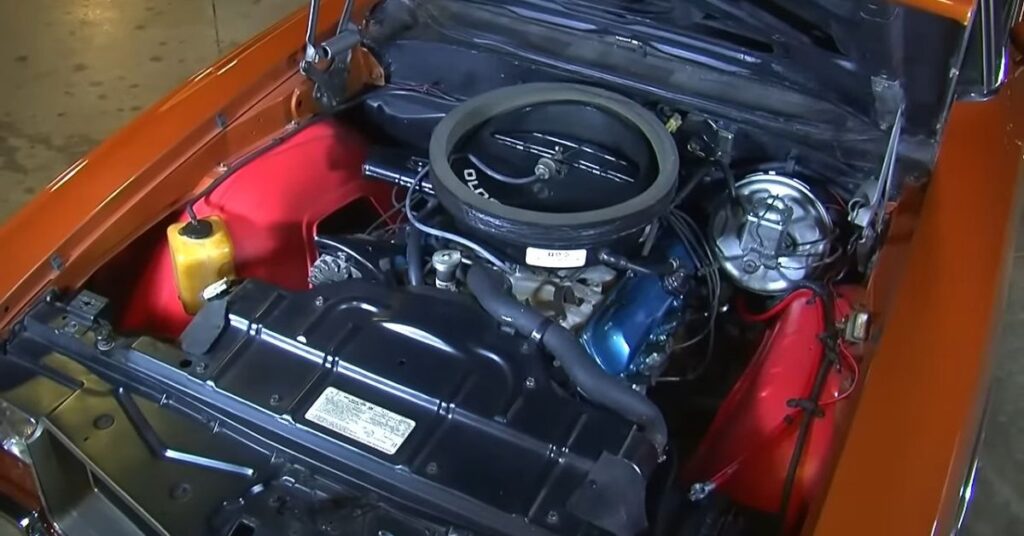
While some may view the power reduction as a setback, it’s essential to consider the changing landscape of the automotive industry during that time. Stricter emissions regulations, increased insurance premiums, and the switch from gross to net horsepower ratings influenced the performance of muscle cars. Despite these factors, the 1971 Olds 442 W30 Convertible remained a symbol of power and style, showcasing the ingenuity and adaptability of Oldsmobile during an era of change.
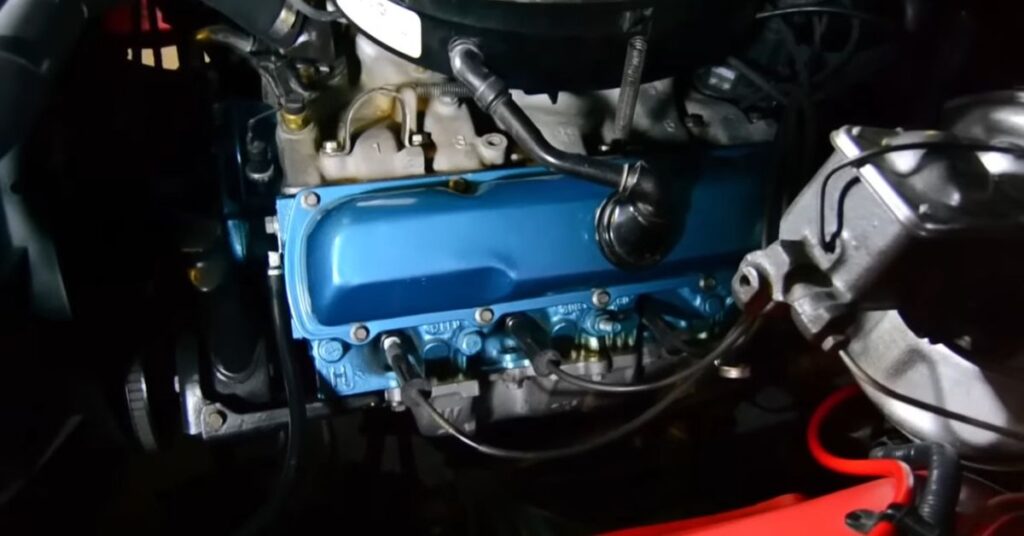
Exterior Design and Color Options
The 1971 Olds 442 W30 Convertible showcased an eye-catching exterior design that blended elegance with a touch of aggressiveness. With its bittersweet color, black convertible top, and W30 stripes, this car demanded attention wherever it went. The combination of unique styling elements and the convertible body style made it a standout in the lineup of muscle cars of that era.
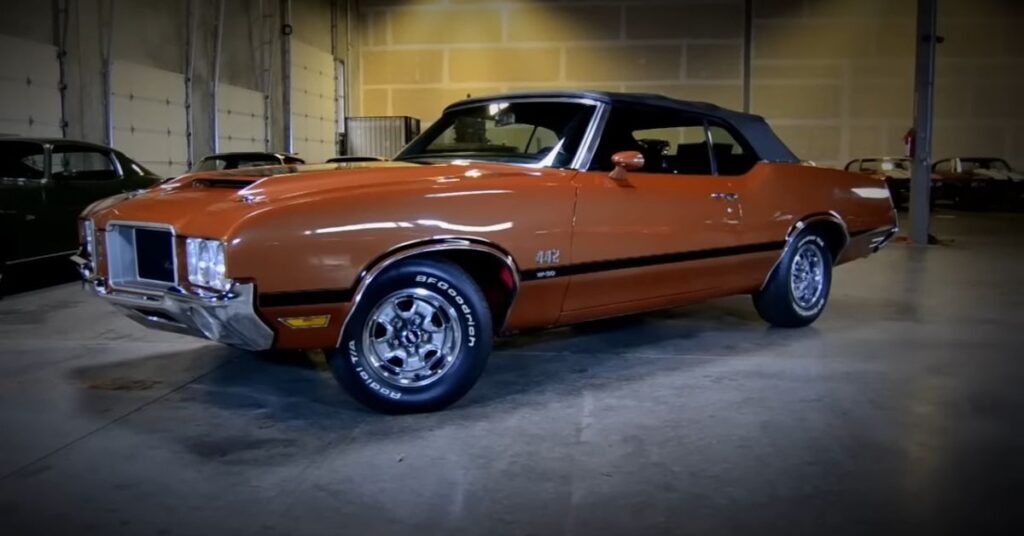
To enhance its performance, the 1971 Olds 442 W30 Convertible featured several lightweight modifications. The reduction in sound deadening materials and the addition of an aluminum rear differential cover helped shed some weight, improving its power-to-weight ratio. These modifications, combined with the powerful engine, contributed to the car’s impressive acceleration and handling characteristics.
Suspension and Handling Upgrades
A muscle car is not just about raw power; it must also deliver exceptional handling capabilities. The Olds 442 W30 Convertible featured reinforced high-performance sway bars, special shock absorbers, and fully boxed lower control arms in the rear suspension. These upgrades, along with an anti-spin differential and power brakes, allowed for precise and controlled handling.
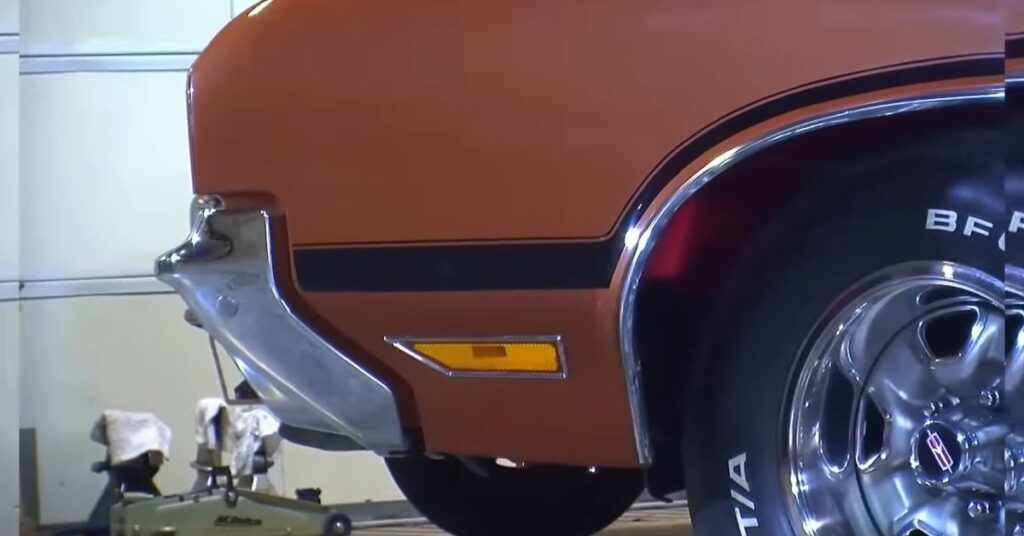
Braking System and Safety Features
As the need for speed increased, so did the importance of reliable braking systems. The 1971 Olds 442 W30 Convertible boasted a robust braking setup, featuring 10.9-inch powered disc brakes in the front and 9.5-inch rear power drums. This combination provided ample stopping power and ensured the driver’s safety during spirited driving.
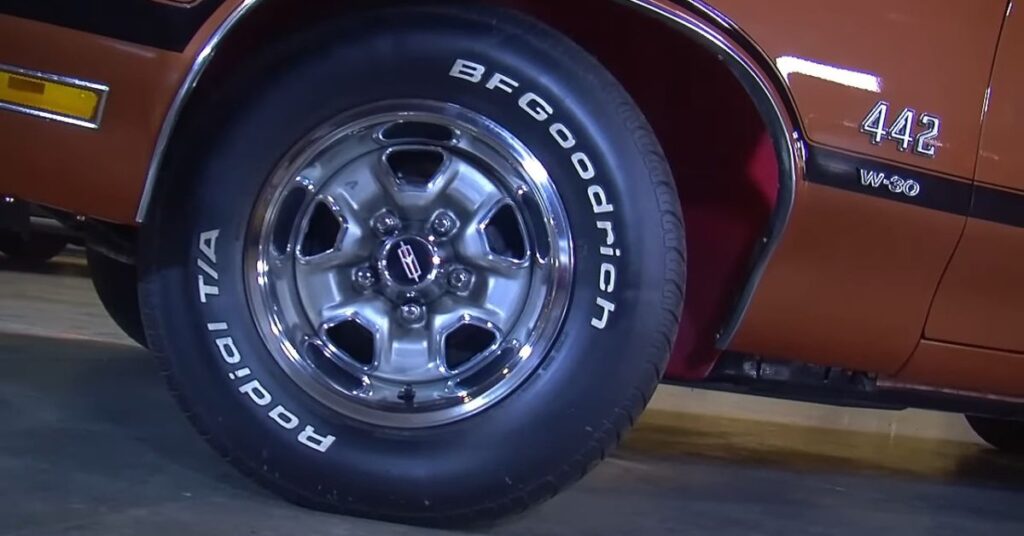
Interior Features and Options
While the exterior and performance of muscle cars often steal the spotlight, the interior of the 1971 Olds 442 W30 Convertible shouldn’t be overlooked. Despite its sporty nature, the featured model boasted a comfortable and enjoyable driving experience. Inside, you would find a relatively basic interior configuration. It came equipped with an AM radio to provide entertainment during your drives and a heating system to keep you cozy on colder days.
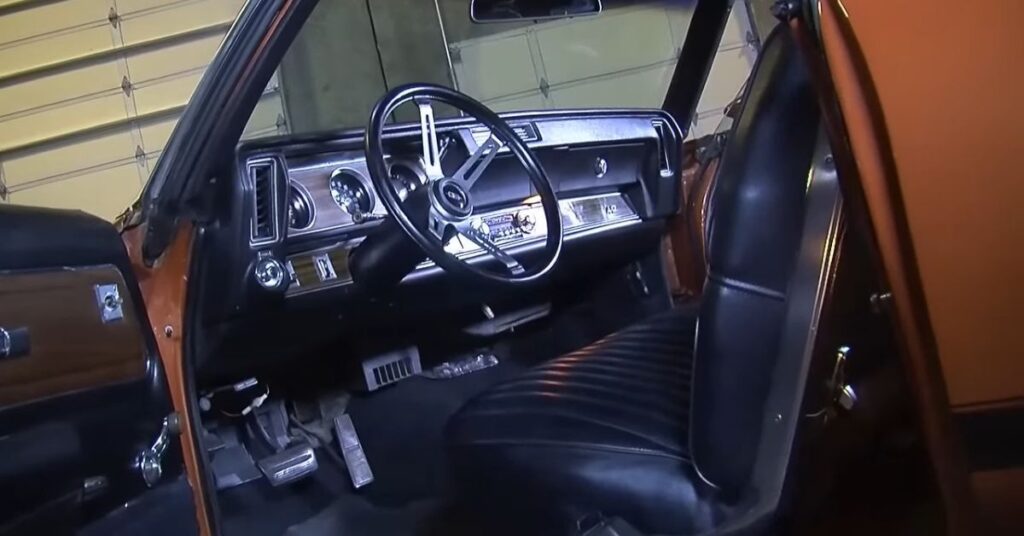
The column shift allowed for easy gear changes, while the bench seat provided ample seating space for both the driver and passengers. Although it may not have featured some of the luxury options available, the simplicity of the interior design emphasized the car’s performance-oriented focus.
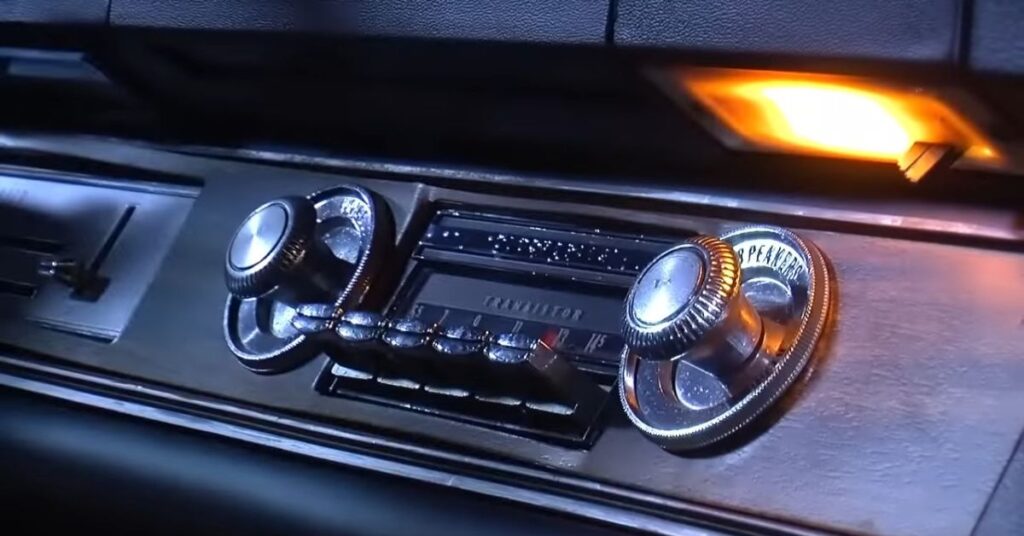
In the world of muscle cars, the driving experience is often the main attraction. The 1971 Olds 442 W30 Convertible offered a thrilling ride with its powerful engine and responsive handling. While the interior may not have been lavishly equipped with advanced features, it didn’t compromise on comfort and functionality. The layout of the controls was intuitive, allowing the driver to focus on the road ahead. The spacious bench seat provided ample room for occupants, ensuring a comfortable journey. Whether you were cruising down the highway or tackling tight corners, the interior of the W30 Convertible offered a driver-centric environment that enhanced the overall experience.
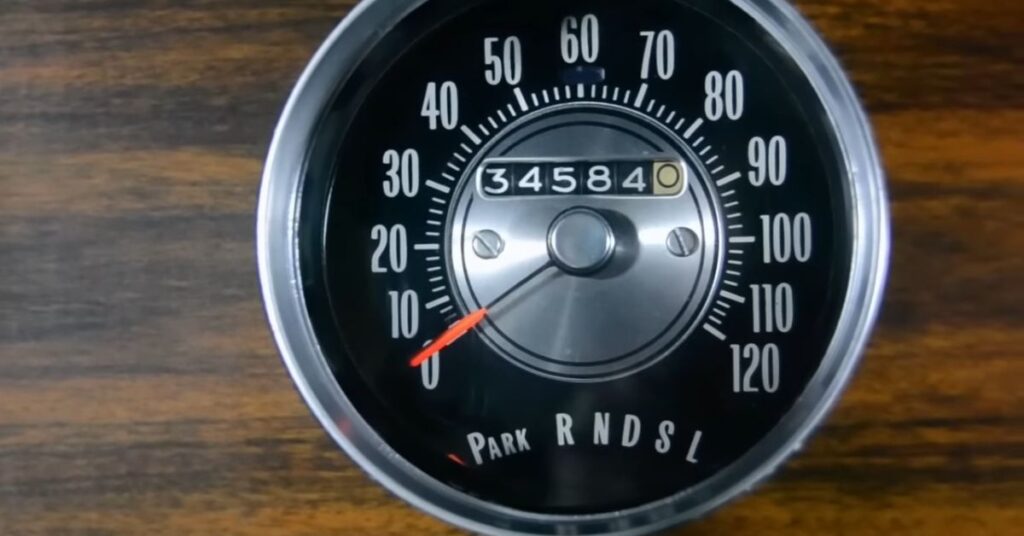
While some collectors may seek out muscle cars with all the bells and whistles, the simplicity of the 1971 Olds 442 W30 Convertible’s interior adds to its charm. It reminds us of the era when these cars were built for pure driving enjoyment rather than excessive luxury. The focus was on the exhilarating performance and the thrill of the open road. So, while the interior may not have boasted the latest gadgets or luxurious amenities, it perfectly complemented the car’s overall character and added to the authentic driving experience that enthusiasts still cherish today.
Conclusion
The 1971 Olds 442 W30 Convertible represents an important chapter in the evolution of muscle cars. Although facing challenges in terms of power reduction and changing industry dynamics, this model retained its iconic status. With its powerful engine, distinctive design elements, and lightweight modifications, the W30 Convertible continues to captivate enthusiasts and remains a testament to the glory days of American muscle cars.
